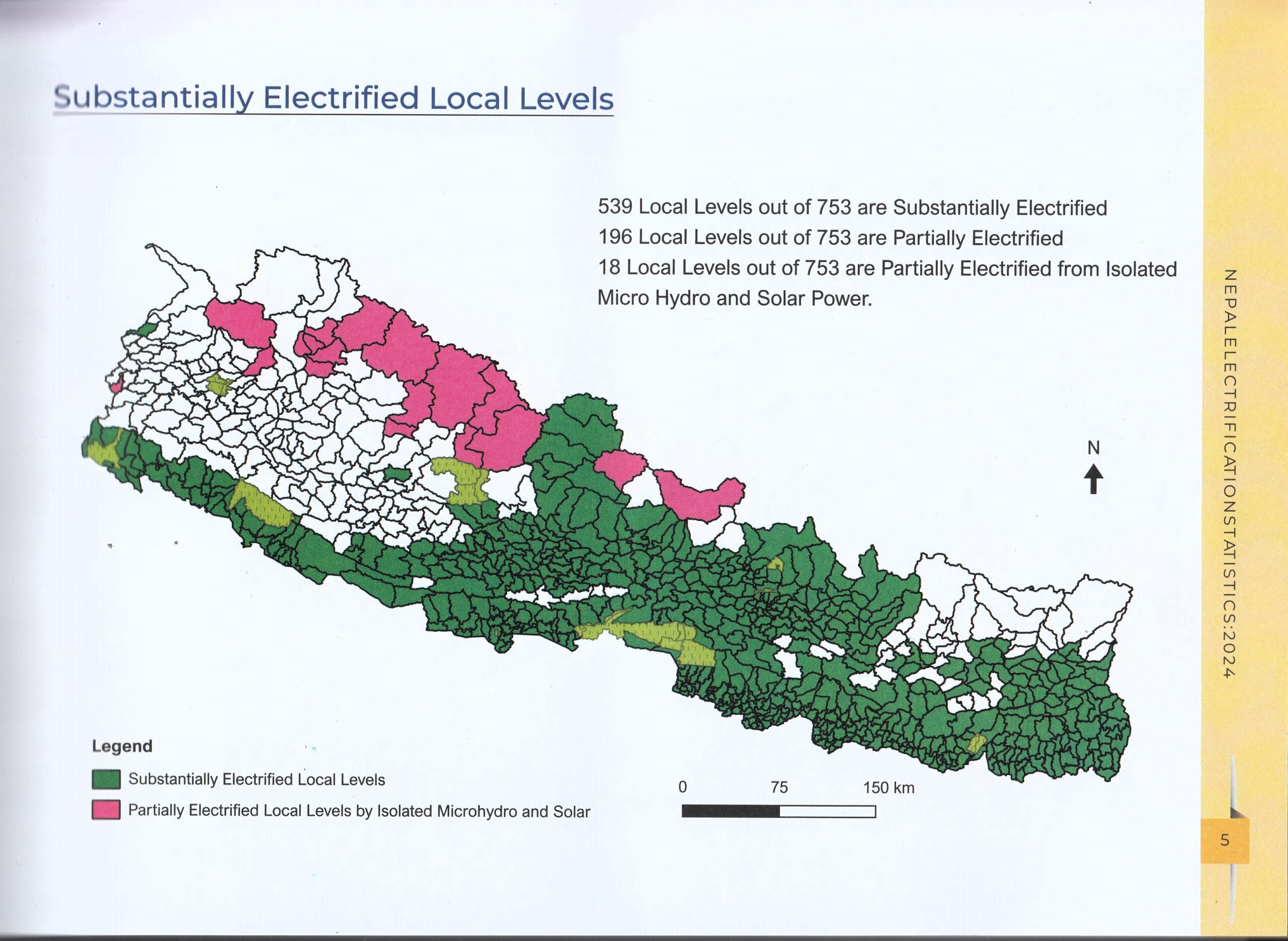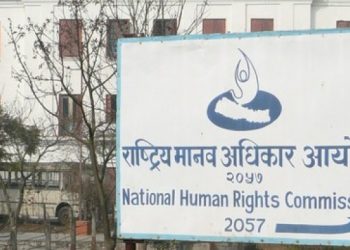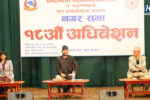KATHMANDU: A total of 539 out of 753 local levels in Nepal have been fully electrified, while 196 have partial electrification, according to the Nepal Electricity Authority (NEA).
To date, 18 local levels have not been connected to the national grid but have access to electricity through micro hydropower projects and solar plants.
As per the NEA’s 2081 BS electrification data, 99 percent of Nepal’s population now has access to electricity.
The data, which covers all levels down to individual wards, reveals that the country currently has 5.935 million electricity consumers.
Of these, 97 percent receive electricity from the national grid, while the remaining 2 percent use alternative sources.
A total of 590 local levels have achieved between 95 to 100 percent electrification, 72 local levels have between 75 to 95 percent, 33 local levels have between 50 to 75 percent, 26 local levels have between 26 to 50 percent, and 32 local levels have up to 25 percent electrification.
NEA Managing Director Kulman Ghising emphasized that the authority is focused on fulfilling the government’s commitment to providing reliable and high-quality electricity to all citizens within the current fiscal year.
He noted that the total electrification rate was only 58 percent in the fiscal year 2072-73 BS, but it has now surged to 99 percent, marking significant progress.
Ghising also mentioned ongoing efforts to identify and connect households in remote areas still lacking electricity.
“Our priority is to provide quality services to areas that already have access to electricity and to connect those that do not yet have NEA services,” he stated.
Efforts are being made to electrify homes in the mountainous and hilly districts of the geographically challenging Karnali and Sudurpaschim provinces within a year.
The NEA has selected contractors and initiated electrification projects in these regions, funded by a $220 million soft loan from the Asian Infrastructure Investment Bank (AIIB) and the European Investment Bank (EIB).
Ghising further noted that efforts are being made to extend electricity access in other regions through government investment and by allocating a portion of the NEA’s earnings.
Among the seven provinces, Madhes Province has achieved 100 percent electrification, followed by Koshi Province at 99.30 percent, Bagmati Province at 99.97 percent, Gandaki Province at 99.40 percent, and Lumbini Province at 98.49 percent. Karnali Province has the lowest electrification rate at 74.38 percent, while Sudurpaschim Province stands at 86.58 percent.
Out of Nepal’s 77 districts, only Humla remains unconnected to the national grid, relying on micro hydropower and solar energy for electricity.
Fifty-six districts have achieved between 95 to 100 percent electrification, 10 districts have 75 to 95 percent, five districts have 50 to 75 percent, and six districts have between 25 to 50 percent electrification.
In Koshi Province, all 14 districts except Solukhumbu and Sankhuwasabha have over 95 percent electrification.
Solukhumbu has achieved 89.04 percent electrification, while Sankhuwasabha has reached 93.99 percent.
Jhapa, Morang, Sunsari, and Dhankuta districts have achieved 100 percent electrification.
Madhes Province has fully electrified all eight of its districts.
In Bagmati Province, Kathmandu, Lalitpur, Bhaktapur, Ramechhap, Nuwakot, and Chitwan have reached 100 percent electrification, with the remaining districts surpassing 95 percent.
In Gandaki Province, Tanahu, Syangja, Parbat, and Kaski districts are fully electrified, while Manang has achieved 87.81 percent, with the remaining districts exceeding 95 percent.
In Lumbini Province, Nawalparasi, Rupandehi, Kapilvastu, Arghakhanchi, Gulmi, and Bardiya districts have achieved full electrification.
However, Rukum East has the lowest electrification rate at 32.24 percent, followed by Rolpa at 85 percent.
In Karnali Province, Rukum West has the highest electrification rate at 95.8 percent, while Mugu has the lowest at 31.80 percent.
Other districts in the province include Surkhet at 86.48 percent, Dailekh at 81.05 percent, Salyan at 79.50 percent, Jajarkot at 49.80 percent, Kalikot at 70.96 percent, Jumla at 62.47 percent, Dolpa at 42.75 percent, and Humla at 32.51 percent.
In Sudurpaschim Province, Kanchanpur and Kailali districts have achieved full electrification.
Bajura has the lowest electrification rate in the province at 33.51 percent, while Dadeldhura has reached 94.08 percent, Doti 88.04 percent, Achham 65.97 percent, Baitadi 61.73 percent, Bajhang 69.03 percent, and Darchula 84.01 percent.









Comment